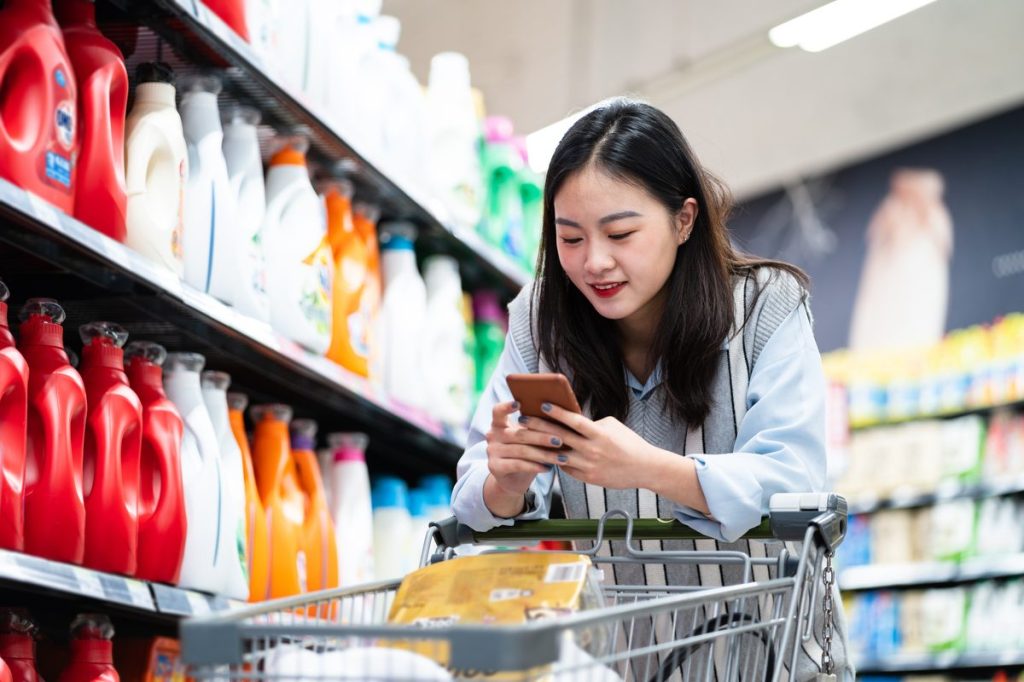The Rise of e-Commerce Holiday Shopping
In 2022, e-commerce drove almost 30% of U.S. omnichannel sales growth.1 E-commerce has emerged as an indispensable retail channel, fueling retail growth and fulfilling the concept of agility to remain competitive in the marketplace. And the holiday season is no exception. But before you can capitalize on this shift, you need to understand what’s driving it.
With that in mind, here are three major drivers behind the growth of e-commerce holiday shopping:
1. Consumer Demand for Convenience
One of the biggest drivers behind the adoption of online shopping is its convenience. Shoppers can browse and purchase products from the comfort of their own homes, at any time of day or night. Online retailers can stock more convenient offerings that have lower demand, so shoppers have an even better chance of finding a product that suits their needs. This is because they do not have the same space constraints as physical stores.
Retailers and CPG brands are reacting to this trend by investing more in online storefronts, increasing their online product assortment, and emphasizing ease of shopping in their marketing efforts. By aligning with these shifting consumer behaviors and offering more convenient solutions, online CPG brands have the opportunity to finish 2023 strong.
2. Online Product Variety
Another key driver of e-commerce growth is the sheer variety of products available to consumers. Online retailers offer a wider selection of products than traditional brick-and-mortar stores. More importantly, they have a much larger variety of niche products that brick-and-mortar retailers may not consider worth the shelf space.
CPG brands can benefit greatly from this variety if they know how to use product attributes properly. Since online shoppers often search by a product characteristic rather than brand, smaller brands and niche products can build an audience. In fact, 78% of grocery searches on Amazon are unbranded. knowing how to label your products is key to standing out from the crowd.
3. Consumer Savings
Finally, many consumers have moved their spend online in search of savings. Shoppers can often find better deals online, especially if they take advantage of sales and promotions. Since online retailers typically have lower overhead costs than brick-and-mortar stores, they can pass these savings on to consumers in the form of lower prices. Online shoppers can also compare prices with ease, so competition is strong.
It’s also important to note that our current economic environment is driving even more consumers online for this reason. 67% of Americans think we are currently in a recession and 52% think the pending recession will last well beyond the next year. CPG brands that align their pricing and promotion strategy to meet this shift can benefit from this online migration.

New Game. New Rules.
Without data, ongoing dynamic economic forces and effects on consumer buying behavior will make pricing and promotion challenging, if not impossible, to get right.
Download our free guide for an in-depth examination of pricing and promotion strategies that are effective today, as well as how these strategies have yielded successful outcomes.
e-Commerce Holiday Shopping in 2023
Now that we’ve looked at why consumers may or may not be shopping online, we need to look at how it’s going to affect this season’s sales. It’s also important to understand how consumers are feeling the pressure of inflation and how it can help or hinder.
Here are a few trends we expect to see in e-commerce for the 2023 holiday season:
1. Earlier Shopping Periods
Last year, as consumer grappled with the start of an economic downturn, they delayed their holiday shopping until the biggest deals were in place. But, consumers are seeking to save this year by starting their shopping much earlier. In the US, for example, 56% of US consumers report that they’ll plan their shopping ahead of time.2 By spreading their shopping out over a larger period of time, cash-strapped consumers are better able to allocate their spending while covering increased costs in their daily lives.
For retailers and CPGs, this can shift how they approach their holiday offerings. Rather than focus only on large promotional periods like Black Friday, they may want to consider expanding their holiday offerings and marketing out further. By anticipating an early wave of holiday shoppers, you may be able to be in place before the competition and gain an early advantage.
2. Decreased Spending
Unsurprisingly, as many consumers are still grappling with increased costs, they’re finding it harder to justify spending on non-essentials. This is especially true when it comes to spending on holiday gatherings. 84% of global consumers say they’re prepared to spend less, the same, or nothing on holiday gatherings and celebrations this season.2
For CPG brands and retailers, it’s important to understand that consumers are seeking value, and value is a complex concept that blends brand, quality, price, and promotion. They’re looking to balance both the prices of the goods they buy and the quality. Understanding how consumers are trying to save and how your product assortment fits is key.
3. The Return of Online Growth
The big story of 2022 was the re-emergence of in-store shopping while e-commerce stabilized. But this year, online shopping is looking to make its own comeback of sorts. Online sales could rebound this season due to shrinking in-store inventories and a rise in deal shopping. In-store assortments in the U.S. are declining with a -1% loss in CPG and a -3% loss in non-food.3 Meanwhile, online dollar sales have increased ~17%.3
In practice, this means brands with a strong online presence can avoid losing shelf space and meet shoppers where they’re shopping. But, this doesn’t mean it will be clear sailing. Selling online still requires you to understand your target shoppers’ needs and the pressures they’re under. Make sure your online strategy is correctly aligned to get the most out of this holiday season.
How to Make the Most of e-Commerce Holiday Spending
Understanding what’s going on in e-commerce and acting on them are different things. This requires adapting your strategies based on accurate, reliable data. Of particular importance is optimizing your product listings for search engines. When consumers are shopping online, they often start by searching for products on search engines. CPG brands need to make sure that their product listings are optimized for search so that they appear at the top of the search results pages. This means using relevant keywords and phrases in the product titles, descriptions, and images.
It’s also important to understand that e-commerce is only one channel in the sales mix. A good CPG strategy is focused on omnichannel sales and marketing. This means creating seamless shopping experiences across both online and offline channels. For example, CPG brands can offer buy-online, click-and-collect, and in-store options. They can also use data to personalize the shopping experience for each customer, regardless of where they are shopping.
Finally, offering competitive prices and shipping options can make all the difference. Consumers are price-conscious during the holiday season, and the current state of inflation is making that more pronounced. CPG brands need to make sure that their prices are competitive and that they offer affordable shipping options. They can also offer discounts and promotions to attract shoppers and make the most out of Deal Days.

Make the Most from Online Shopping with NIQ
To reach online and omnichannel shoppers, you need to know where they’re choosing to shop, how, and why. But, that’s only possible if you have access to reliable, up-to-date data.
Emerging brands can start their journey with a free Byzzer™ subscription, NIQ’s platform built for emerging brands and their budgets. Free access gets you 3 free reports and a weekly alert to get you started with data. Byzzer™ provides breakdowns of a wide range of attributes and markets in easy-to-digest reports. Best of all, we’ll show you how to leverage this information for your action plan. It’s never too early to start acting on data.
Interested in more valuable insights like these?




